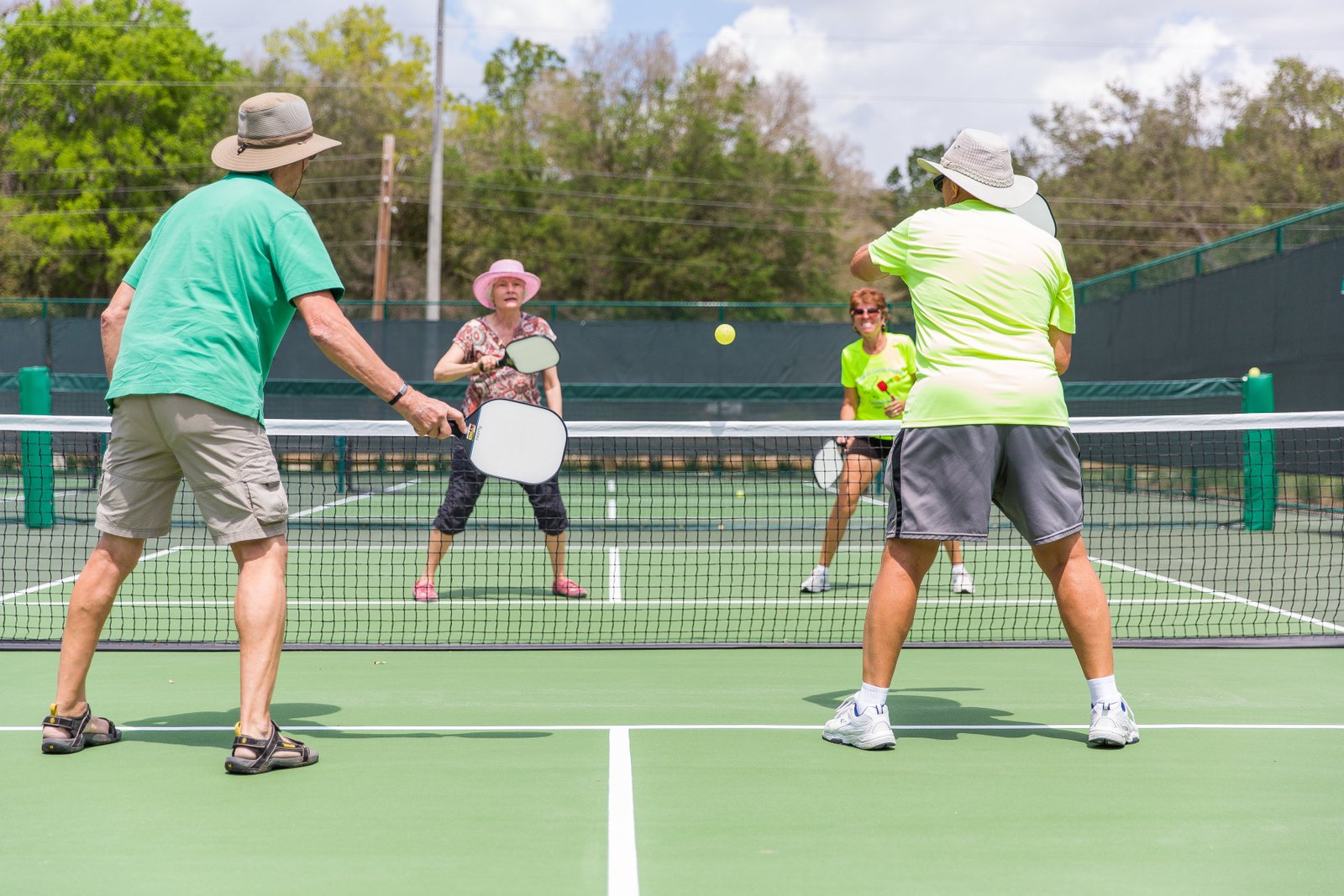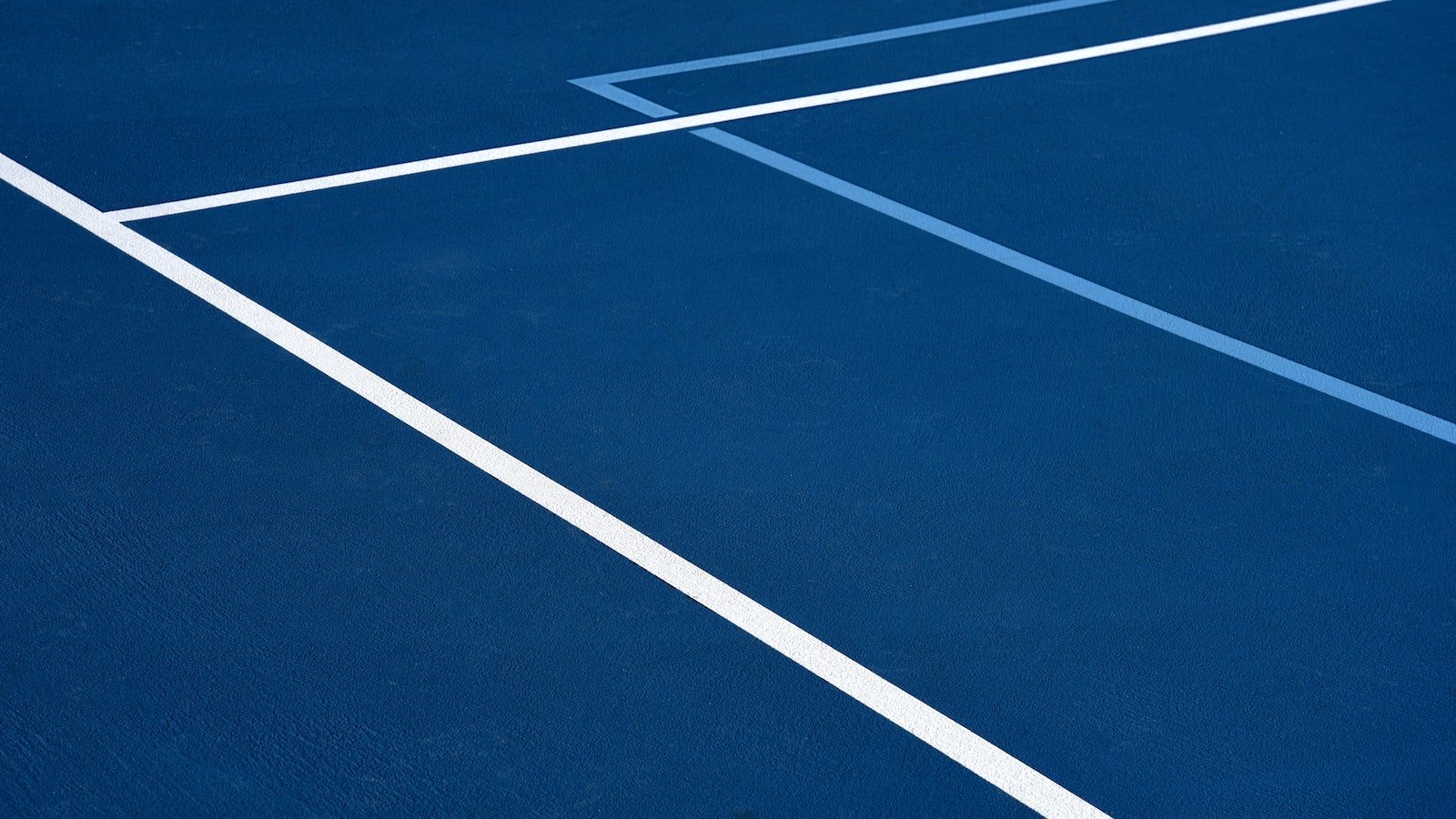Pickleball, once a well-kept secret belonging to a tight-knit group of enthusiasts, has undeniably transformed into a cultural phenomenon that knows no bounds. From its humble origins as a backyard game to the bustling tournaments that now captivate thousands, the evolution of pickleball culture has been nothing short of remarkable. As this spirited sport transcends its niche status and finds its place in the mainstream, we embark on a journey through time to grasp the enchanting tale of how pickleball has taken the world by storm.
Table of Contents
- Pickleball’s Humble Beginnings: Tracing the Origins of a Niche Sport
- Embracing Inclusivity: How Pickleball Became a Sport for All Ages and Abilities
- From Backyard Games to National Tournaments: The Rising Popularity of Competitive Pickleball
- Building a Strong Community: The Role of Clubs and Associations in Shaping Pickleball Culture
- Promoting Growth and Sustainability: Strategies for Expanding Pickleball’s Reach
- Q&A
- To Wrap It Up

Pickleball’s Humble Beginnings: Tracing the Origins of a Niche Sport
The captivating journey of pickleball dates back to the summer of 1965 on Bainbridge Island, Washington. On a whimsical afternoon, three friends – Joel Pritchard, Bill Bell, and Barney McCallum – found themselves searching for an engaging activity to entertain their bored families. With a few random sports equipment pieces in hand, they ingeniously combined parts of badminton, ping pong, and tennis, setting the foundation for pickleball’s unique and dynamic gameplay.
At its inception, pickleball had no elaborate grandeur or strategic masterplan. Instead, it emerged in a humble backyard as an impromptu solution, blending elements from different sports into a joyful fusion. The trio’s families, instantly hooked by the excitement, realized this game had remarkable potential, and the sport soon expanded beyond their neighborhood. As word spread, communities across the United States began adopting and embracing pickleball, propelling its growth by leaps and bounds.
From grassroots gatherings to organized tournaments, pickleball swiftly captured the hearts of players seeking a dynamic yet inclusive activity. Its popularity soared, resulting in a formal set of rules being assembled in 1967. In less than a decade, pickleball evolved from an experimental backyard game to a recognized sport, symbolizing the dedication and passion of its pioneers and early adopters alike.

Embracing Inclusivity: How Pickleball Became a Sport for All Ages and Abilities
In a world where inclusivity and accessibility are paramount, pickleball has emerged as a sport that welcomes individuals of all ages and abilities. With its origins rooted in tennis, badminton, and table tennis, pickleball has carved a niche for itself by providing a unique blend of athleticism, strategy, and camaraderie. This engaging sport is played on a smaller court, making it more approachable for people with limited mobility or physical challenges.
One of the key factors that has contributed to pickleball’s popularity among diverse demographics is its adaptability. Unlike many traditional sports, pickleball encourages modifications to accommodate players with various abilities. Players can adjust the rules, equipment, or court layout to suit their specific needs. This flexibility empowers people of all skill levels to actively participate and enjoy the game.
Moreover, pickleball fosters an inclusive atmosphere by promoting teamwork and friendship. It’s not uncommon to find players of different ages, backgrounds, and skill levels joining forces on the court. The sport encourages intergenerational play, helping bridge the gap between generations and nurturing a sense of community. Pickleball tournaments often offer divisions for different age groups and skill levels, ensuring that players can compete on an equitable playing field.
As pickleball continues to grow in popularity, its commitment to inclusivity and accessibility have become defining features. The sport’s ability to bring people of all ages and abilities together is what makes pickleball a powerful force for unity and enjoyment.

From Backyard Games to National Tournaments: The Rising Popularity of Competitive Pickleball
Pickleball, a racquet sport that combines elements of tennis, badminton, and ping pong, has been taking the world by storm. What once started as a casual backyard game has now evolved into a fiercely competitive sport, attracting players from all walks of life. Pickleball’s popularity has reached such heights that it has transcended local communities and is now gaining recognition on a national level.
The rising popularity of pickleball can be attributed to several factors. Firstly, its easy-to-learn rules and simple gameplay make it accessible to people of all ages and skill levels. Whether you are a seasoned athlete or a beginner, pickleball offers a level playing field for everyone to enjoy. Additionally, the sport’s compact size and versatility allow it to be played in various settings, from indoor courts to outdoor surfaces, making it a favorite among recreational players and serious competitors alike.
As the sport continues to gain momentum, it has also caught the attention of organizations and professional athletes. Many national tournaments and championships have now dedicated pickleball divisions, offering players the opportunity to compete at the highest level. This exposure further fuels the rising popularity of pickleball, inspiring more people to pick up a paddle and join in on the fun.

Building a Strong Community: The Role of Clubs and Associations in Shaping Pickleball Culture
Clubs and associations play a vital role in shaping the vibrant and inclusive culture of the pickleball community. These tight-knit groups serve as a gathering place for beginners, enthusiasts, and seasoned players alike, fostering a sense of camaraderie and shared passion.
One of the key benefits of joining a pickleball club or association is the opportunity to connect with like-minded individuals who share a common interest in the sport. These clubs provide a platform for players to come together and engage in friendly competition while promoting sportsmanship and fair play. They offer a space where pickleball enthusiasts can exchange tips and strategies, organize tournaments, and share their love for the game.
Moreover, clubs and associations contribute to the growth of the pickleball community by providing a sense of belonging and support. They create an inclusive environment where players of all ages, backgrounds, and skill levels feel welcome. By organizing regular events and social gatherings, these groups help foster strong relationships and friendships among members, ultimately building a community that is not only passionate about pickleball but also supportive of one another in their personal journeys.
Joining a pickleball club or association is not just about improving your skills on the court; it’s about becoming part of a larger community that shares your love for the game. Through the efforts of these organizations, the pickleball culture continues to flourish, inspiring more people to pick up a paddle and join in the fun.
Promoting Growth and Sustainability: Strategies for Expanding Pickleball’s Reach
As the popularity of pickleball continues to surge, it is crucial to implement effective strategies that foster the growth and sustainability of this exciting sport. Expanding pickleball’s reach requires a multifaceted approach, combining innovative ideas and community engagement to attract new players and ensure long-term success.
One strategy to promote growth is through the establishment of pickleball communities and clubs. These dedicated spaces provide a welcoming environment for both beginners and experienced players to come together, share their passion, and improve their skills. By fostering a sense of camaraderie and support, pickleball communities empower players to develop their game and create a strong foundation for sustainable growth.
Another essential aspect of expanding pickleball’s reach is through targeted outreach programs. Collaborating with local schools, senior centers, and recreation centers can introduce a wide range of individuals to the sport. Offering pickleball clinics, demonstrations, and inclusive events helps break down barriers and encourages people of all ages and abilities to give pickleball a try. Utilizing social media platforms, newsletters, and online resources can also effectively spread the word and engage a broader audience.
To ensure long-term success, it is crucial to invest in pickleball infrastructure. This includes the construction of dedicated pickleball courts, ensuring maintenance and accessibility, and providing essential equipment. By having well-maintained facilities, pickleball enthusiasts can enjoy the sport and attract new players, ultimately contributing to the growth and sustainability of pickleball’s reach.
Q&A
**What is pickleball, and how did it originate?**
Pickleball is a paddle sport that combines elements of tennis, badminton, and table tennis. It was invented in 1965 by Joel Pritchard, Bill Bell, and Barney McCallum on Bainbridge Island, Washington, as a way to entertain their families.
**How has pickleball culture evolved over the years?**
Initially considered a niche sport, pickleball has gained tremendous popularity over the years, evolving from a mere backyard pastime to a mainstream phenomenon. It has seen an increase in participation, the development of professional tournaments, and the establishment of dedicated pickleball communities worldwide.
**What factors contributed to the rise of pickleball?**
Pickleball’s rising popularity can be attributed to its inclusivity, accessibility, and adaptability for people of all ages and skill levels. The sport’s simplicity, low equipment cost, and the focus on community building have all played a role in attracting new players and fostering a welcoming culture.
**How has the competitive scene evolved within the pickleball community?**
The competitive scene in pickleball has experienced significant growth, with more serious players joining the sport and seeking professional opportunities. The creation of national and international pickleball associations, as well as the expansion of organized tournaments, has elevated the level of competition and professionalism within the community.
**What impact has pickleball had on other racket sports?**
While pickleball’s rise to prominence may have caused some diversion of participants from other racket sports, it has also fueled interest in racquet-based activities as a whole. As players discover the joy of pickleball, they are often inspired to explore other similar sports, contributing to the overall growth of racket sports.
**How has pickleball culture embraced technology and social media?**
Pickleball culture has embraced technology and social media platforms, allowing enthusiasts to connect, share tips, and organize events on a global scale. Popular platforms like Facebook groups and dedicated pickleball apps have facilitated the exchange of knowledge and have been instrumental in creating close-knit communities worldwide.
**What does the future hold for pickleball culture?**
With its ever-growing popularity and inclusivity, pickleball is poised to continue its trajectory into the mainstream. As the sport gains more recognition and attracts new players, there is ample opportunity for further professionalization, the development of dedicated facilities, and the establishment of a vibrant global pickleball community.
To Wrap It Up
As we reach the end of this captivating journey through the evolution of pickleball culture, we are left amazed at the remarkable transformation this sport has undergone. From its humble beginnings in the backyards of suburban America to the mainstream phenomenon it is today, pickleball has carved its own path, captivating the hearts and rackets of millions across the globe.
As this delightful game continues to transcend boundaries, it has warmly embraced diverse generations, fostering a sense of camaraderie and unity. From young enthusiasts to seasoned veterans, pickleball has become a unifying force, effortlessly bridging the gap between age groups and igniting a passion that knows no bounds.
What was once a niche sport, whispered about among a select few, is now a roar heard in sports arenas and community centers alike. The rapid spread of pickleball culture has been nothing short of incredible. The infectious enthusiasm, the electric energy that permeates through the players, and the unyielding determination to master this quirky game - pickleball has truly captured our imagination.
As we bid farewell to this exploration of pickleball’s evolution, we are left with a bittersweet feeling. While we celebrate the sport’s growth and its newfound place in mainstream culture, we also yearn for the days when it was our little secret, a hidden gem shared among a tight-knit community. But alas, change is inevitable, and with it comes progress and a chance for more people to find joy in the art of paddle and ball.
So let us embrace this evolution, this journey from niche to mainstream, with open arms. Let us celebrate the diversity it brings, the friendships it forges, and the memories it has bestowed upon all who have been touched by the magic of pickleball.
As we step off the court and reflect on this evolution, we are left with one resounding truth - pickleball is not merely a sport, but a way of life that connects us all. So let us play on, and may the spirit of pickleball continue to inspire and unite us, both on and off the court.
As an affiliate, my content may feature links to products I personally use and recommend. By taking action, like subscribing or making a purchase, you’ll be supporting my work and fueling my taco cravings at the same time. Win-win, right?
Want to read more? Check out our Affiliate Disclosure page.




